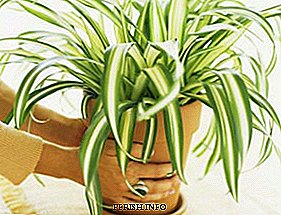 The influence of music on plants was noted in antiquity. Thus, in Indian legends it is mentioned that when the god Krishna played the harp, the roses opened right before the eyes of the amazed listeners.
The influence of music on plants was noted in antiquity. Thus, in Indian legends it is mentioned that when the god Krishna played the harp, the roses opened right before the eyes of the amazed listeners.
In many countries, they believed that singing or musical accompaniment improves the well-being and growth of plants and contributes to the most abundant harvest. But it was not until the 20th century that evidence of the influence of music on plants was obtained as a result of experiments conducted under strictly controlled conditions by independent researchers from different countries.
Research in Sweden
70s: Scientists from the Swedish Music and Therapeutic Society found that the plasma of plant cells under the influence of music moves much faster.
Research in the USA
The 70s: Dorothy Retelleck conducted a whole series of experiments on the effect of music on plants, which resulted in patterns associated with doses of sound effects on plants, as well as with specific types of influencing music.
The duration of listening to music matters!
Three experimental groups of plants were kept in the same conditions, while the first group was not “voiced” by the music, the second listened to music for 3 hours daily, the third - for 8 hours daily. As a result, plants from the second group grew significantly more than plants of the first, control group, but those plants that were forced to listen to music eight hours a day, died within two weeks from the beginning of the experiment.
In fact, Dorothy Retelleck obtained a result similar to that obtained earlier during experiments to determine the effect of "background" noise on factory workers when it was established: if the music plays constantly, the workers get tired more and work less productively than if there was no music at all;
The style of music matters!
Listening to classical music leads to an increase in yield, while hard rock causes the death of plants. Two weeks after the start of the experiment, the plants that “listened” to the classics became uniform in size, lush, green and actively flowering. The plants, which got hard rock, grew extremely tall and thin, did not bloom, and soon died. Surprisingly, the plants that listened to the classics, stretched towards the sound source, just as they usually reach for the light source;
The instruments that sound matter!
Another experiment was that the plants included similar sounding music, which can be conventionally classified as classical: for the first group, organ music by Bach, for the second group - North Indian classical music performed by sitar (stringed instrument) and tabla (percussion) . In both cases, the plants leaned toward the sound source, but in the dynamics with the North Indian classical music the slope was much more pronounced.
Studies in Holland
In Holland, confirmation of the conclusions of Dorothy Retelleck regarding the negative impact of rock music was received. Three adjacent fields were sown with seeds of the same origin, and then “voiced” by classical, folklore and rock music, respectively. After some time, in the third field, the plants either drooped or disappeared altogether.
Thus, the influence of music on plants, intuitively suspected earlier, is now scientifically proven. On the basis of scientific evidence and on the wave of interest in selling, various devices have appeared, more or less scientific and designed to increase the yield and improve the condition of the plants.
For example, in France, “super vintage” CDs with records of specially selected works of classical music are popular. In America, thematic audio recordings are included to target plants (increase in size, increase the number of ovaries, and so on); in China, "green-frequency generators" have been installed in greenhouses for a long time, which transmit different sound waves that stimulate the growth of photosynthesis and stimulate plant growth taking into account " taste of a particular variety of plants.

Leave Your Comment